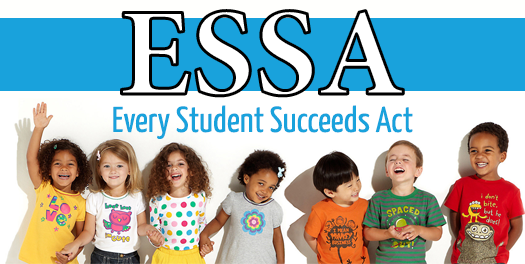Toolkit: Every Student Will Succeed

SOURCE: National Center for Youth Law
SUBJECT: Education
TYPE: Toolkit/Guide
YEAR PRODUCED: 2017
The Every Student Succeeds Act (ESSA) was signed by President Obama on December 10, 2015, and a new toolkit released by the Legal Center for Foster Care and Education can help jurisdictions implement the changes mandated by ESSA.
Amending the Elementary and Secondary Education Act, ESSA requires educational agencies to combine efforts with those of child welfare agencies, both on state and local levels, to secure educational stability for foster youth. It is the first time such provisions have been included in federal education law.
Signaled as a top priority by the U.S. Departments of Education (ED) and Health and Human Services, on June 23, 2016, ED distributed thorough guidelines on the implementation of ESSA. Comprised of two Dear Colleague Letters and an inclusive Q&A, the information included deadlines for school stability provisions (which were slated for December 2016), the duties of various contact persons, and clarified the responsibilities of education and child welfare agencies at state and local level
Some of the specific protections under ESSA for students in foster care include the youth’s ability to remain in the same school they attended when first placed out of home (when in the child’s best interest), immediate enrollment in a new school and transfer of academic records when a change in school is warranted, transportation as needed, and designated State Education Agency (SEA) and Local Education Agency (LEA) Points of Contact (POC). Additionally, the language “awaiting foster care placement” would no longer appear in the McKinney-Vento Act, which is the federal law ensuring immediate enrollment and school stability for homeless youth and children, and said protections would continue under ESSA.
The collaborative efforts expected between child welfare and education agencies encompass planning that prohibits disruption in a foster youth’s education. While the role of the SEA POC is to ensure the implementation of ESSA, oversee involvement of local education and child welfare agencies, as well as consider the overlap of requirements of the federal Fostering Connections Act, responsibilities of the LEA POC entails collaborating with child welfare agencies to create decision-making processes and determine the data collection and sharing of documents and records.
ESSA does not require state and local child welfare agencies to appoint their own POCs, but is highly recommended. Doing so could incorporate working with local agencies for a student’s immediate enrollment, establishing protocol for notifying local agencies when a child is placed in foster care or has moved placements, and function as the primary contact between children in care and service providers.
Access the full report here. Toolkit: Every Student Will Succeed - The Chronicle of Social Change:
